How To Gain Weight In Your Butt: Grow Big the Right Way
Author:
Unlock your full potential by engaging with our experts and community! Have questions about your fitness journey or looking for expert advice on weightlifting techniques? Don’t hesitate — leave a comment below and David Sasha Schulz will provide a personalized answer and insights to help you reach your goals.
Torokhtiy is reader-supported. Some links are affiliate links, and we may earn a commission at no extra cost to you. See our disclosure page for details.
If there’s one part of your body that you should workout to become bigger and stronger, it’s your butt. After all, your glutes are the largest muscle in your body. Not only that, they add to your looks as well! So, how to gain weight in your butt?
How To Gain Weight In Your Butt
How to gain weight in your butt? In order to gain weight in the buttocks and hips, you need to follow the simple principles of gaining muscle mass. You have to perform workouts that target the glutes, and eat a]sufficient protein calories.
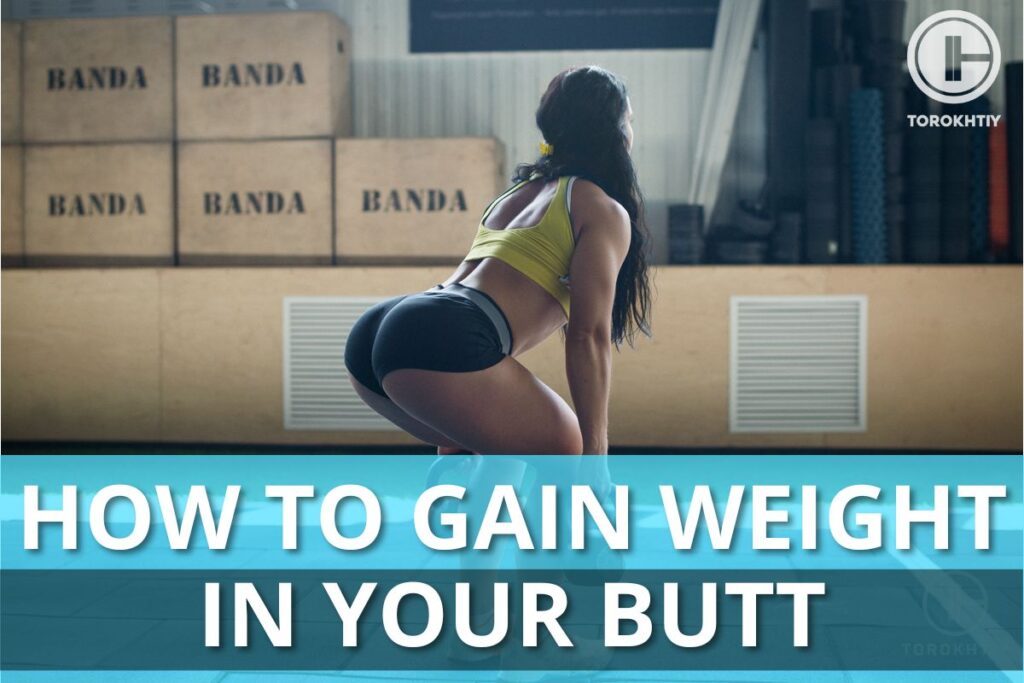
Key Principles Of Gaining Muscle Mass (Applies To Any Muscle Group)
It doesn’t matter which muscle group you want to bulk up, the key principles remain the same across the board. Whether you wish to gain weight on buttocks and thighs, or want to strengthen your traps, increasing muscle mass requires proper workouts, nutrition, and rest.
Let’s get into the details:
1. Follow A Meal Plan With A Small To Moderate Calorie Surplus
While it is possible to increase muscle mass in a eucaloric state or a slight deficit, it is likely easier in a surplus. Eat plenty of lean protein, whole grains, healthy fats and fruits and vegetables to give your body the necessary micronutrients. A small or infrequent helping of less healthy, tasty foods can be fine to hit your calorie target.
2. Eat Enough Protein
There’s no doubt about the fact that you need to eat protein for muscle growth. Good sources of protein include:
- Meat (chicken, beef, lamb)
- Eggs
- Milk
- Whey protein
- Cottage cheese
- Greek yogurt
When wanting to gain weight in legs and butt, aim for 1.6 to 2.4 grams of protein per kilogram of body weight each day. Also, spread out your protein intake approximately 3 to 5 times throughout the day. This way your muscles get the protein needed to grow throughout the day and night.
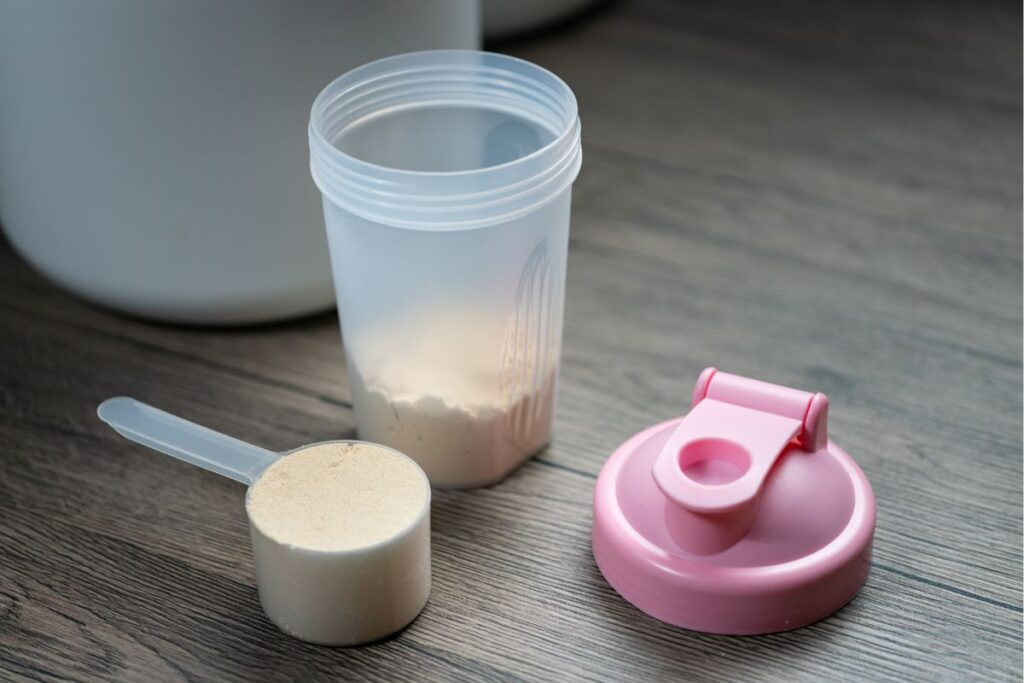
3. Do Resistance Training With Progressive Overload (PO)
The goal of progressive overload is to continuously challenge your muscles. You can do this by:
- Increasing weight on bar (or machine)
- Increasing relative intensity (proximity to failure)
- Increasing volume (sets and/or reps)
- Reducing rest time in between sets
The idea is to consistently push your muscles to adapt to greater stresses.
4. Be Patient And Consistent
Finally, gaining muscle takes regular work and patience. On average, it can take up to 3 months to see noticeable muscle growth. Beginners can expect weight gain of 1.0 to 1.5% (of total body weight) per month with consistent training.
And don’t forget to rest. Try to get 8 hours of sleep every night and rest 1 to 2 days per week. You may also benefit from massages on rest days.
So How To Gain Weight In Your Butt?
There’s nothing more sexy than the curve that clearly defines the butt and thighs, right? Like a lot of people, if you too are wondering how to gain weight in buttocks and whether it’s even possible, then you have come to the right place.
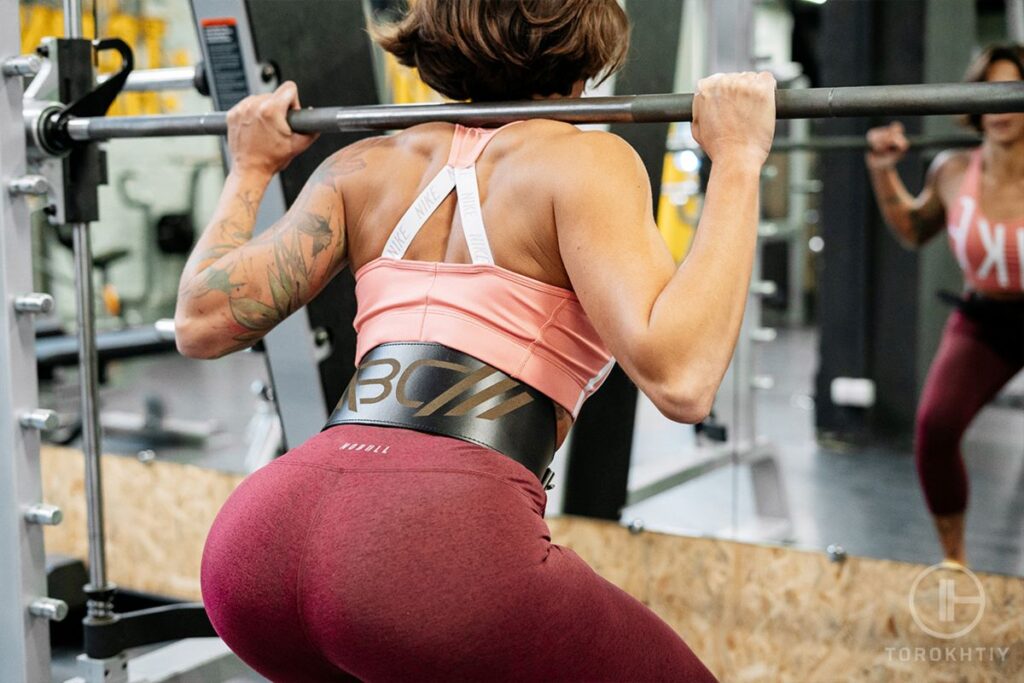
1. Follow The Key Nutrition Guidelines Above
To summarize what has been discussed above:
- Maintain a modest calorie surplus of mostly healthy, whole foods (lean meats, fruit, veggies, whole grains, healthy fats)
- Consume at least 1.6g of protein per kg of body weight each day, spaced out between several meals
2. Focus Training On The Target Muscle Group (Gluteal Muscles)
Here are best exercises for gluteus maximus (GMax) as per research:
Step-Up
No glute workout is complete without this traditional strength and conditioning workout. Because of the increased stretch on the glutes, the higher the box, the more you work your buttocks.
- Lateral Step-Up
To perform this variation, put one foot on a box or bench and the other on the floor. Push through the whole foot of the elevated leg to pull yourself to a standing posture on the box, with minimal support from the other.
- Diagonal Step-Up
Standing on one side of the box or bench, take a diagonal step up. Press the front foot down the box or bench and work the hips. Just don’t push off the rear foot.
- Cross-Over Step-Up
Grab two kettlebells or dumbbells, one in each hand. Cross one foot over the box, making sure the toe points straight forward. Push through the leg on the box with 90% of your effort to force yourself up. Step down on the opposite side and repeat the process. Keep an eye on your foot to maintain balance, and try for a smooth, controlled movement without hurrying.
Deadlift
Moving on, deadlifts strengthen and add more definition to your glutes.
- Conventional Deadlift
To target the glutes with a deadlift, put your legs around six inches apart. Grip the bar equally with your arms, keeping your shoulders back and your abs engaged.
As you lower the bar and then pull it back up, use your lower body rather than your upper body, squeezing your buttocks and hips at the top. Maintain a consistent breathing rate throughout the action, avoiding forward shoulder slumping to avoid back strain.
Repeat the action, stressing gluteal engagement with each lift.
- Hex Bar Deadlift
Stand in the center of the hex bar, feet shoulder-width apart, knees slightly bent, and shoulders over hips. Tension the shoulders, hips, and core before hinging the hips and knees to drop towards the bar. Grip the grips, spin your arms, and raise your hips higher than your knees and shoulders to feel a stretch in your legs.
Keep your spine neutral as you push through the floor, using your glutes and thrusting your hips forward. Maintain long arms, concluding with shoulders over hips. To finish, lower by hinging at the hips and knees while keeping the hex bar centered and a neutral spine until plates contact the floor or hands reach mid-shin for unloaded bars.
Hip Thrust
Here’s another effective exercise to build strength and muscle in your glutes. The exercise uses a barbell with which you lift your (lower) body off the floor.
- Traditional Barbell Hip Thrust
In the standard version of the hip thrust, you keep your back against the middle of the bench as you lift your hips up.
- Rotational Barbell Hip Thrust
This variation of the hip thrust offers the greatest GMax activation. As you elevate your hips, push your knees out.
- American Barbell Hip Thrust
In this version, you go higher so that the lower back becomes the pivot. It is not as effective as the rotational thrust, but it is still a good exercise.
Squat
Squats engage your GMax area as well as your quads and hamstrings.
- Belt Squat
If you don’t have access to a belt machine, get a dip belt and two stable boxes and place them at the width of your squat stance. Stand on the boxes with your belt around your waist, letting your weight dangle between them.
Squat with an erect upper body, making sure your hips don’t rise quicker than your shoulders. Drive through your heels and maintain control throughout the exercise to engage your glutes. Begin with lighter weights and make sure the box is stable for safety.
- Split Squat
Stand approximately a foot in front of a training bench, but face the other side. Place one foot on the bench, laces down. You may either carry a weight in both hands or complete these exercises using only your body weight. Squat down until both your front and rear legs are 90 degrees bent. If you have trouble balancing, place one hand on a power rack.
- Modified Single-Leg Squat
In this variation, both feet are on the ground, but you focus on the working leg by putting it slightly forward and limiting the participation of the other leg.
Lunge
The modified single-leg squat is similar to a lunge, where one foot is doing the activity
- Traditional Lunge
Place your feet hip-width apart. Step forward and bend your knees until they are at a 90-degree angle. Advance onto the lead leg. Step through, raising your back leg and dragging it forward so your back foot falls in front of you in a lunge stance.
- In-Line Lunge
You can perform this variation with a dowel. Stand erect with the dowel in line with the head, upper back, and top of the buttocks. Lower into a lunge stance so that the right knee makes contact with the board behind the left heel. Return your body to its initial position. Rep with opposing leg and arm postures.
3. Train Your Glutes With Progressive Overload
We have already discussed progressive overload. The simplest approach to accomplishing this is to increase the weight or repetitions of an activity with each workout.
This will ensure long-term muscular growth and development since it drives your body to generate new muscle due to increased mechanical stress. The emphasis is on progressive; focus on making progress over months and years.
Why Are Your Butts Not Growing?
There are a variety of physical and lifestyle factors that hinder butt growth, such as:
1. You Are Not Eating Enough Calories And Protein
Glute growth, like any muscle gain, is a combination of eating, working out, and rest. Protein is an important building block for muscle repair and development, so aim for 2g per kg of body weight.
Carbohydrates also play an important part in feeding muscle growth. So go for complex carbohydrates such as oats, brown rice, quinoa, beans, and vegetables to get energy for hard training. Aim for 2-4 grams of carbs per kilogram of body weight.
Furthermore, essential fatty acids present in lipids are needed for supporting biological activities such as muscle regeneration. Consuming around 0.8 grams of fat per kg of body weight promotes muscle cell development and repair.
And don’t forget booty-building supplements (more on this below).
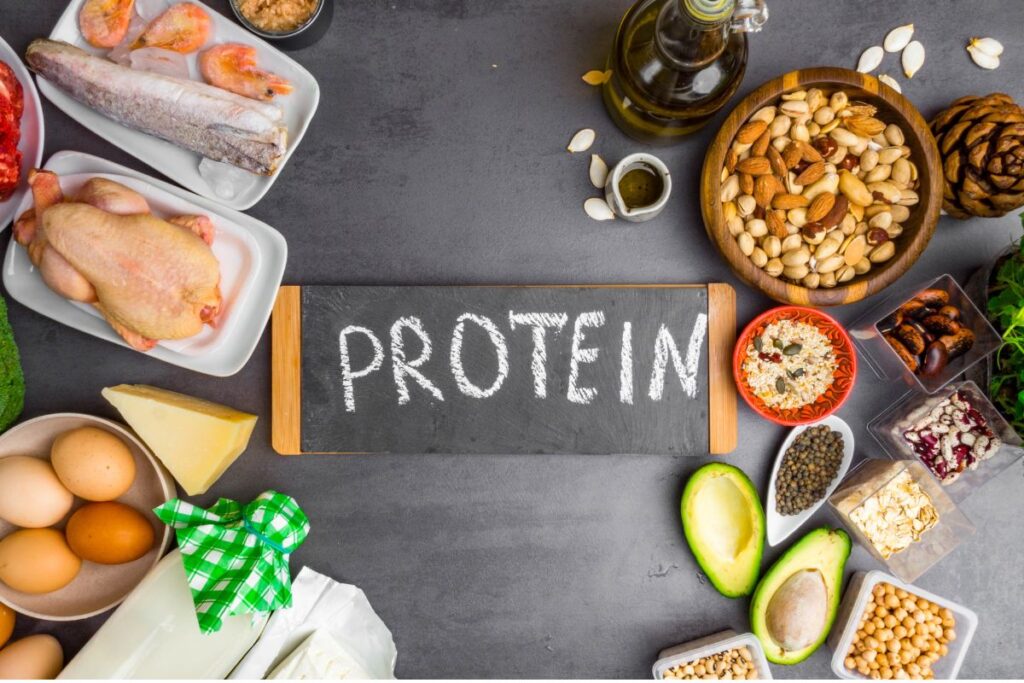
2. You Rely On Endless Booty Band Walks From “Booty Influencers”
Maybe you’re eating right but not working out properly. In order to do so, many people have jumped on the resistance-band bandwagon.
While these bands provide additional isometric resistance for the gluteus medius/minimus, this does nothing to actually increase muscle growth of gluteus maximus.
The emphasis on hip extension (straightening your hip) in workouts such as squats and hip thrusts does not correspond with the band’s resistance vector (pulling the knees together). If you want to increase your glute med and min growth, train them dynamically with cable side kicks or side lying leg raises.
So limit the use of booty band walks to warm up, or ditch them altogether. Instead, go for good old lower body workouts that target your buttocks dynamically. This table lists the workouts with the highest level of GMax activation, many of which have been explained above.
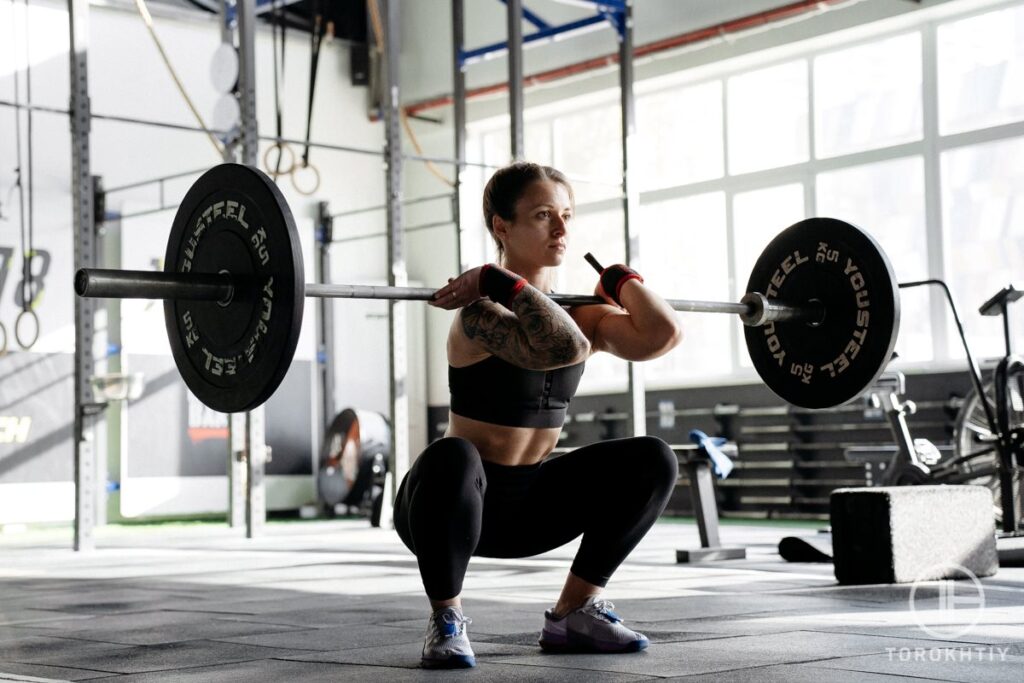
3.You Perform The Same Exercises With The Same Training Volume (No Progressive Overload)
Consistency is important in general, but don’t do the exact same weight and repetitions each time. With PO, you may get noticeable growth within a few weeks. Implementing PO in squats, for example, may require progressing from 100 to 105 pounds, increasing repetitions or modulating relative intensity by going closer to failure. Just make sure you are using the correct techniques to maintain consistency and efficiency.
Whey Protein We Recommend
Transparent Labs Whey Protein Isolate
- Serving Size: 32.96 grams
- Price Per Serving: ~$1.8
- Protein Percent Of Weight (%): 85%
- Proteins: 28 grams
- Carbohydrates: 1 gram (depends on flavor)
- Fat: 0.5 gram (French Vanilla only)
- Added Sugar: 0 gram
- Calories Per Serving: 120
- Recommended By Athletes: Hafþór Júlíus Björnsson, Terron Beckham, Paul Sklar
When it comes to building muscle, whey powder is the simplest and easiest way to consume protein. This makes it perfect for building your glute muscles. However, if you’re looking for quality ingredients, you can’t go wrong with Transparent Labs Grass-Fed Whey Isolate.
Their whey isolate protein powder is sourced from grass-fed cow milk, and is available in 13 flavors. The carbs and fats vary depending on the different flavors.
Transparent Labs clearly takes great care while producing their whey protein isolate. Their goods are made in the United States at a facility that has been certified to meet FDA Good Manufacturing Practices (GMP) criteria for food and nutritional supplements.
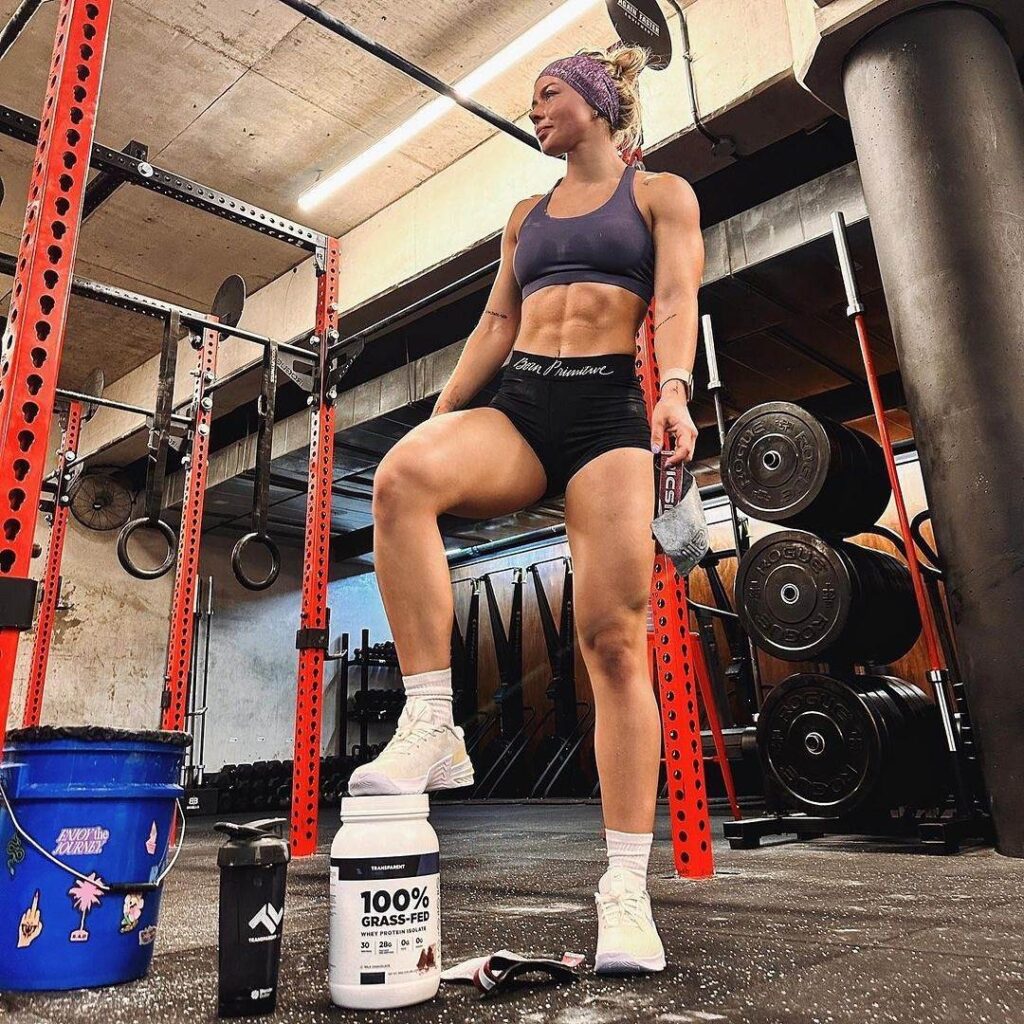
It uses Stevia extract, a natural sweetener that enhances the flavor but doesn’t make it taste overly sweet. The mixability is also very good. The powder combines well with milk without leaving any noticeable dregs, making it perfect for smoothies and shakes.
Transparent Labs’ don’t skimp on quality, which makes it our recommended whey protein! However, this product is pricey at almost ~$2 per serving. However, for this price, you get a top-quality 100% grass-fed whey protein isolate to gain weight in buttocks!
Positives:
Could be better:
FAQ
How Do I Get Bigger Buttocks Fast?
You can get bigger buttocks with calorie surplus and workouts that promote GMax activation (with progressive overload).
Can I Get a Bigger Bum If I’m Skinny?
Skinny people can build muscle in any part of the body with strength training that targets a specific area.
How Long Does It Take To Grow Glutes?
If you eat sufficiently and workout consistently with PO, you can expect growth within 4 to 8 weeks.
Conclusion
There’s no denying the fact that the majority of the population just love a shapely booty. Whether it’s on themselves or on someone else, there’s an attraction to it that you simply cannot deny. This is a reason why a lot of people want to gain weight in buttocks.
By performing exercises that specifically target the glutes, eating the right amount of protein, carbs and fat, (maybe eat a bit more for calorie surplus!), and getting adequate rest, you too can have a big butt.
You can include our recommended Transparent Labs Whey Protein Isolate in your daily routine to boost the protein intake. You can use this in your butt building diet plan as well to make all sorts of smoothies and shakes.
So, what are your thoughts on the whole how to gain weight in the buttocks and hips phenomenon? Are you getting into building a big butt for that curvy look or are you doing it for strength purposes?
Let us know in the comments section below, and if you have any queries, please do not hesitate to send us your queries!
Also read:
- Homemade Mass Gainer Shake
- Breakfast for Muscle Gain
- Is Pizza Good for Muscle Building
- Is Milk Good for Bulking
- Is Cereal Good for Bulking
- How to Use Mass Gainer
- Should You Do Cardio While Bulking
References:
- Sara Lindberg, “Exercises and Strategies for a Bigger, Firmer Butt”, Healthline, https://www.healthline.com/health/how-to-get-a-bigger-butt (accessed November 13th, 2023)
- Kim Nunley, “Can You Gain Weight to Make Your Butt Bigger?”, Livestrong, https://www.livestrong.com/article/366192-how-to-gain-weight-and-grow-your-butt-bigger/ (accessed November 13th, 2023)
- Anna Steve, “How to Gain Weight in Thighs and Buttocks Fast”, DrWorkout, https://www.drworkout.fitness/gain-weight-in-thighs-and-buttocks/ (accessed November 13th, 2023)
- Kristina Mikolcic, “How to gain weight in your butt?”, KristinaMikolcic, https://kristinamikolcic.com/how-to-gain-weight-in-your-butt/ (accessed November 13th, 2023)
- Daniella Peters, “Booty Building 101: Everything I’ve Learnt About Building Glutes So Far”, The Girl Who Hated Exercise, https://thegirlwhohatedexercise.wordpress.com/2018/11/20/booty-building-101-everything-ive-learnt-about-building-glutes-so-far/ (accessed November 13th, 2023)
Why Trust Us?
With over 20 years in Olympic weightlifting, strength training, nutrition coaching, and general fitness our team does its best to provide the audience with ultimate support and meet the needs and requirements of advanced athletes and professional lifters, as well as people who strive to open new opportunities and develop their physical capabilities with us.
By trusting the recommendations of our certified experts in coaching, nutrition, and sports training programming, as well as scientific consultants, and physiotherapists, we provide you with thorough, well-considered, and scientifically proven content. All the information given in the articles concerning workout programming, separate exercises, and athletic performance, in general, is based on verified data.
The product testing process is described in more detail here.
Author: David Sasha Schulz
Doctor of Chiropractic, BSc Human Biology, CSCS
Strength coach (CSCS) – 10 years
Sasha is a Chiropractor and Kinesiologist practicing in Kelowna, BC, Canada. He has been practicing Chiropractic since 2019, integrating manual therapy, strength training and programming principles, and nutritional strategies to get his patients optimal results. He currently scratches the competitive itch in fitness, and the occasional endurance race, and plays golf and snowboards for fun. He has an interest in all strength and fitness-related sports.



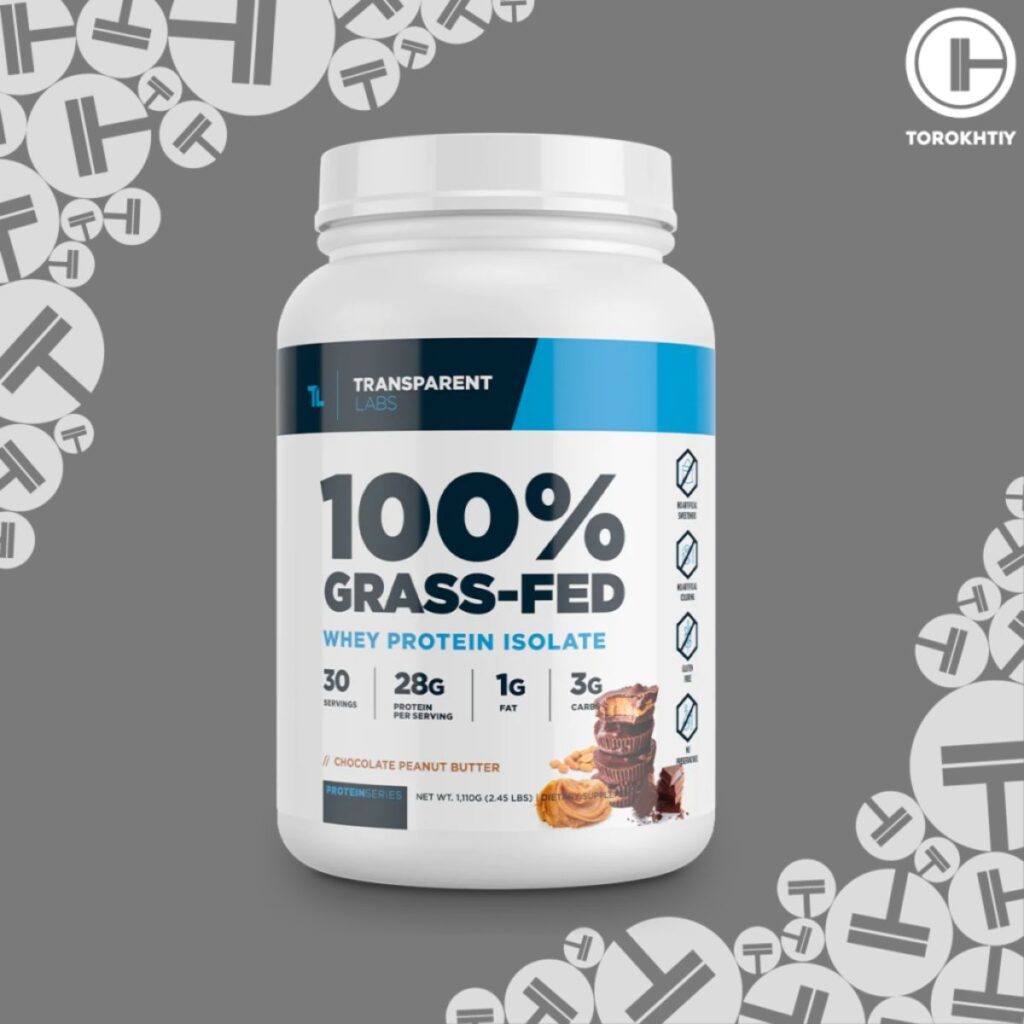
I recently had 2 surgeries involving my small intestines/bowel and removal of gallbladder and appendix. I lost 10 lbs. I was 127, I lost all of the fat in my glutes. Now my glutes are saggy with no shape. Can you help me?
Hi @Kim!
It all depends on timing. What do we mean by recently. First of all make sure you consult with your doctor your ability to exercise – then when you have green light – start gradually.
As to building muscles in your glutes, concept is simple but not easy. Start with 12-20 effective sets in a week, of exercise targeting glutes (deep squats, lunges, RDLs, hip thrusts), and perform them very close to failure. Rep range anywhere from 6-25 reps.
Caloric surplus is helpful for muscle building. Adequate protein intake is necessary – aim for 2g per kg of bodyweight. And be patient.